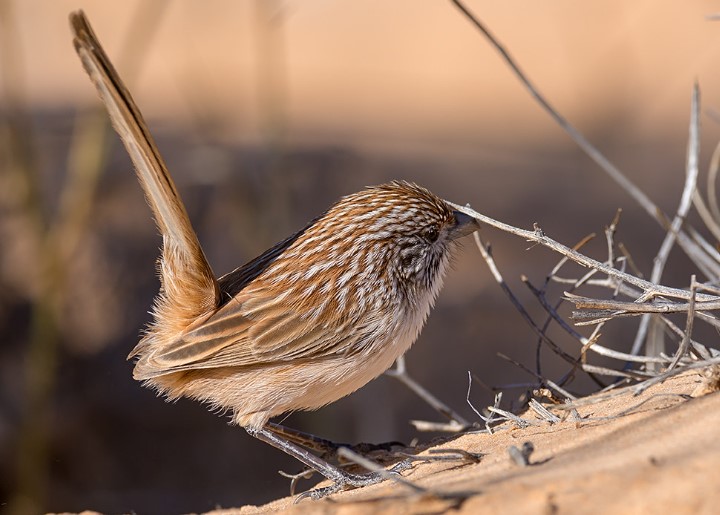Habitat: The Australian Hobby (Falco longipennis) is a fierce and dashing hunter. A wide variety of open habitats, including woodlands, rivers, and urban areas, support Hobbies, but cliffs and escarpments are relatively rare habitats. Its long primary wing feathers give it the name longipennis, meaning long-winged bird of prey. In midair or in power dives from above, this small falcon captures birds that are being pursued or pursued directly. A bird of a size up to its own is taken, and sometimes even a larger bird is struck and knocked to the ground.
In addition to plucking and eating its kill there, the hobby usually transports it to a perch in its talons. Perches are generally high, exposed branches of trees where hobby birds rest or watch for prey movements while bobbing their heads. Usually searching on the wing, it flits about swiftly at treetop level, surprising smaller birds feeding below and catching stragglers before they reach safety.

Diet: The species most often hunts at dusk when it catches bats or snatches large flying insects such as grasshoppers, beetles, crickets, dragonflies, and winged ants.
Hunting: Occasionally, it will soar and circle higher, looking around or even hovering awkwardly. Even though they are not uncommon and often visit urban parks, Australian Hobbies are usually solitary and wary, except when nesting. The Hobbies have also been observed attacking perched raptors from behind and stooping steeply at vegetation when attacking airborne raptors. When attacking shorebird roosts, they have also been observed flying towards them behind the cover of trees, dunes, or cliffs. The hobby is capable of harassing larger birds but not killing them.
Alternative Names: This dashing bird is also known as the Little Falcon and the White-fronted Falcon.
Size: male 300 mm; female 340–350 mm long.
Identification: Both sexes are similar. Upper parts slate-grey to black, with black shaft streaks and gray edging to the back and wing coverts. Flight and rail feathers are dusky gray with hidden buff bars. Sides of the face and sometimes the crown black. The forehead, throat, and collar are sides of the neck buff-cream. The rest of the undersurface is rufous-brown, streaked black on the breast and thighs, and grading to black mottling on the belly and flanks. Extreme southeastern, southwestern, and Tasmanian birds are much darker than others. Eyes are dark brown; eye rings are bluish-white. Bill is light gray with a black tip; cere is dull yellow. The feet are dull yellow, and the claws are dusky in color. The immature bird appears above, including its crown, and is generally gray-brown with buff edges to its feathers. Underparts are rufous-brown with indistinct streaks. Adult plumage is acquired after the first year. The downy young is off-white; the bill and cere are flesh-pink.

Vocals: A twittering call was repeated. In defense, shrill, harsh chatter. Its calls are similar, but higher in pitch, to those of a male peregrine falcon (Falco peregrinus) when it arrives with food at its nest. Similarly to the Nankeen kestrel (Falco cenchroides), the hobby has alarm and contact calls. Trill-type voices are voiced sporadically upon initial handling, and harmonic vocalizations are assessed as being the most common call used during territorial defenses and mobbings.
Nest and Breed: In southern Australia, nesting and breeding take place between September and November. Old magpie nests, crow nests, and other bird nests are lined with leaves and bark; hollows are sometimes used. Nests are abandoned by other birds and are occupied by breeding pairs who defend them fiercely and loudly. While the female lays eggs, broods, and cares for the young unaided, the male does the bulk of the hunting, particularly until brooding ceases. Females are called off the nest by the male, who passes them in midair or in nearby trees, and they are plucked, dismembered, and fed to the young by the female. Upon the emergence of pin feathers, brooding ceases, and both adults drop food at the nest, leaving the young to fend for themselves. The majority of young fledge.

Eggs and Incubation: The bird lays 2 or 3 eggs, occasionally four; pale buff, thickly sprinkled with red spots and blotches; oval shape, about 46 x 34 mm. The incubation period is 30 days. Young fledged in five weeks.
Distribution: The Australian Hobby is found throughout Australia, especially in open wooded areas. The species is nomadic and migratory, particularly in the south, reaching southern Papua New Guinea, New Britain, the Moluccas, and the Lesser Sundas in the winter.
Similar Species: The Australian hobby is closely related to the northern hobby (Falco subbuteo), which is found in Eurasia and migrates to Africa in the winter months.
Races: There are two races: one black-backed in the coastal southeast, extreme southwest, and Tasmania; the other grey-backed everywhere else.
Family: It belongs to the order Falconiformes and the family Falconidae.
Read More: Peregrine Falcon Call







